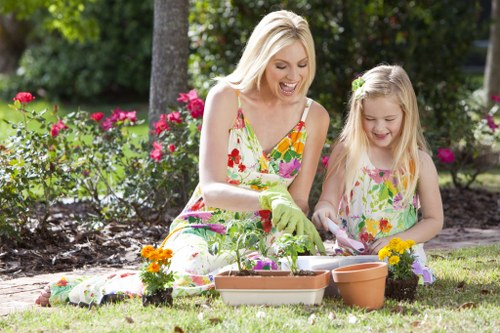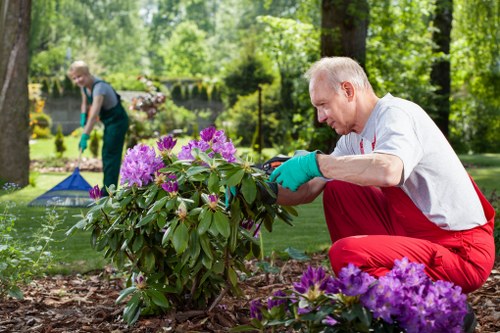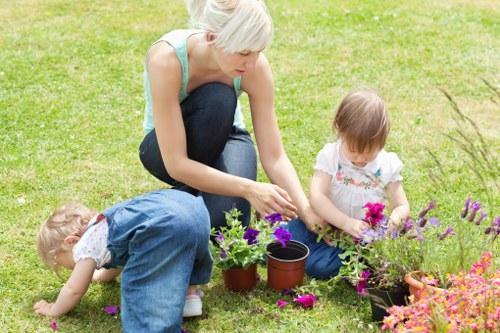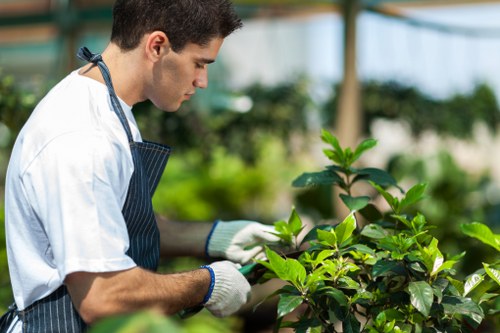Landscape Gardening in Seven Sisters: Transform Your Outdoor Space
Introduction

Welcome to the beautiful world of landscape gardening in Seven Sisters, where your outdoor space can be transformed into a stunning and functional retreat. Whether you have a sprawling garden or a cozy backyard, the principles of landscape gardening can help you create a space that reflects your personal style and meets your practical needs.
Landscape gardening is more than just planting flowers; it involves thoughtful planning, design, and maintenance to ensure that your garden thrives throughout the year. In Seven Sisters, with its unique climate and soil conditions, selecting the right plants and design elements is crucial for success.
This article will guide you through the essentials of landscape gardening in Seven Sisters, providing tips and insights to help you design, implement, and maintain a garden that you can enjoy for years to come.
Understanding the Seven Sisters Climate

Before embarking on your landscape gardening journey, it's essential to understand the local climate of Seven Sisters. This knowledge will inform your plant selection, scheduling, and overall garden design.
Seven Sisters experiences a temperate climate with mild summers and cool winters. The area receives moderate rainfall throughout the year, which supports a variety of plant life. However, it's also important to consider factors such as sunlight exposure, wind patterns, and soil type when planning your garden.
By understanding these climatic conditions, you can choose plants that are well-suited to the environment, ensuring they thrive and reduce the need for excessive maintenance.
Choosing the Right Plants

Selecting the appropriate plants is a cornerstone of successful landscape gardening. In Seven Sisters, a mix of native and adapted species can create a resilient and aesthetically pleasing garden.
Native Plants: These are plants that naturally occur in the Seven Sisters region. They are well-adapted to the local climate and soil conditions, making them easier to maintain and more resistant to pests and diseases.
Adapted Species: These plants may not be native but have been successfully grown in similar climates. They can add diversity and unique textures to your garden.
- Roses: Classic choice for adding color and fragrance.
- Lavender: Offers both beauty and a pleasant scent, attracting pollinators.
- Hostas: Ideal for shaded areas, providing lush green foliage.
- Ornamental Grasses: Add movement and structure to your garden design.
Perennials vs. Annuals
Understanding the difference between perennials and annuals is vital for garden longevity and maintenance.
Perennials live for multiple years, providing consistent beauty with minimal replanting. They are often the backbone of a landscape garden.
Annuals complete their life cycle in one growing season. They offer vibrant, seasonal color and can be changed annually to keep the garden dynamic.
Designing Your Garden Layout

A well-thought-out garden layout enhances both the functionality and aesthetics of your outdoor space. Here are key elements to consider:
Focal Points: These are elements that draw the eye, such as a beautiful tree, a water feature, or a sculpture. Placing focal points strategically can create visual interest and guide visitors through the garden.
Balance and Symmetry: Achieving balance in your garden layout ensures that the space feels harmonious. Symmetrical designs can convey order, while asymmetrical arrangements can create a more natural, relaxed feel.
- Pathways: Define the flow of movement and connect different areas of the garden.
- Borders: Use borders to separate different planting areas and add structure.
- Seating Areas: Incorporate benches or pergolas to provide spaces for relaxation and enjoyment.
Choosing Garden Structures
Incorporating structures like pergolas, arbors, and trellises can add vertical interest and support climbing plants.
These structures not only enhance the aesthetic appeal but also provide shade and define different sections within your garden.
Hardscaping Elements

Hardscaping refers to the non-living components of your garden, such as patios, decks, fencing, and pathways. These elements provide structure and functionality.
Pathways: Choosing the right material for pathways can influence the garden’s look and feel. Options include gravel, stone, brick, or wood, each offering a distinct texture and appearance.
Retaining Walls: These are essential for managing slope and providing vertical interest. They can also create terraces for planting and adding depth to the landscape.
- Patios: Perfect for outdoor dining and entertaining.
- Decks: Ideal for creating elevated seating areas.
- Fencing: Provides privacy and defines property boundaries.
Water Features
Incorporating water features like ponds, fountains, or waterfalls can add a tranquil element to your garden. The sound of running water creates a soothing atmosphere and can attract wildlife.
When planning a water feature, consider the maintenance requirements and ensure it complements the overall garden design.
Maintenance Tips

Regular maintenance is key to keeping your landscape garden healthy and beautiful. Here are some essential maintenance tips:
Watering: Ensure your plants receive adequate water, especially during dry periods. Drip irrigation systems can provide efficient watering while conserving water.
Weeding: Regularly remove weeds to prevent competition for nutrients and water. Mulching can help suppress weed growth and retain soil moisture.
- Pruning: Trim plants to encourage healthy growth and maintain desired shapes.
- Fertilizing: Provide necessary nutrients to support plant health and growth.
- Pest Control: Monitor for pests and diseases, and address issues promptly to protect your garden.
Seasonal Care
Adapting your maintenance routine to the seasons ensures your garden remains vibrant year-round.
In spring, focus on planting and initial growth. Summer maintenance includes regular watering and pest management. Fall involves preparing plants for winter, while winter care includes protecting sensitive plants from frost.
Sustainable Gardening Practices

Embracing sustainable gardening practices not only benefits the environment but also creates a healthier garden.
Composting: Recycling garden waste into compost enriches the soil and reduces the need for chemical fertilizers.
Rainwater Harvesting: Collecting rainwater for irrigation conserves water and reduces your garden’s environmental footprint.
- Organic Gardening: Avoiding synthetic pesticides and fertilizers promotes biodiversity and soil health.
- Native Plants: As mentioned earlier, native plants require less water and are more resistant to local pests.
- Mulching: Helps retain soil moisture, suppress weeds, and improve soil quality.
Energy-Efficient Lighting
Incorporating energy-efficient lighting, such as LED fixtures or solar-powered lights, enhances the beauty of your garden while minimizing energy consumption.
Strategically placed lighting can highlight key features and provide safety for pathways at night.
Conclusion

Landscape gardening in Seven Sisters offers a unique opportunity to create a personalized and sustainable outdoor space. By understanding the local climate, selecting the right plants, and incorporating thoughtful design and maintenance practices, you can transform your garden into a beautiful and functional haven.
Embrace the principles outlined in this guide to embark on your landscape gardening journey. Whether you’re a seasoned gardener or a beginner, these tips will help you achieve a thriving and picturesque garden.
Ready to take the next step? Contact us today to start designing your dream garden and enjoy the benefits of a well-crafted landscape.

